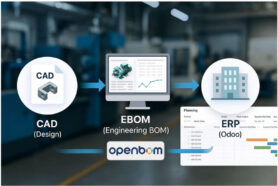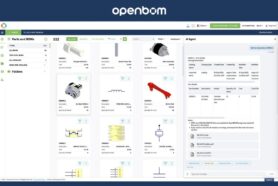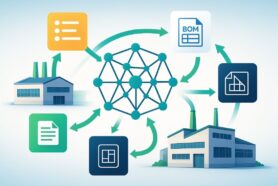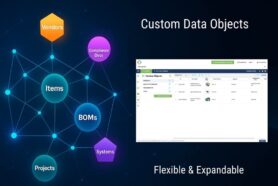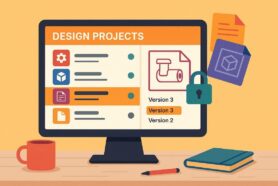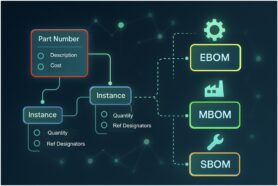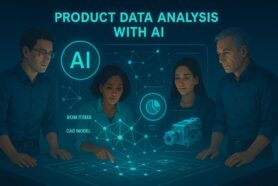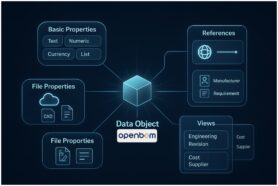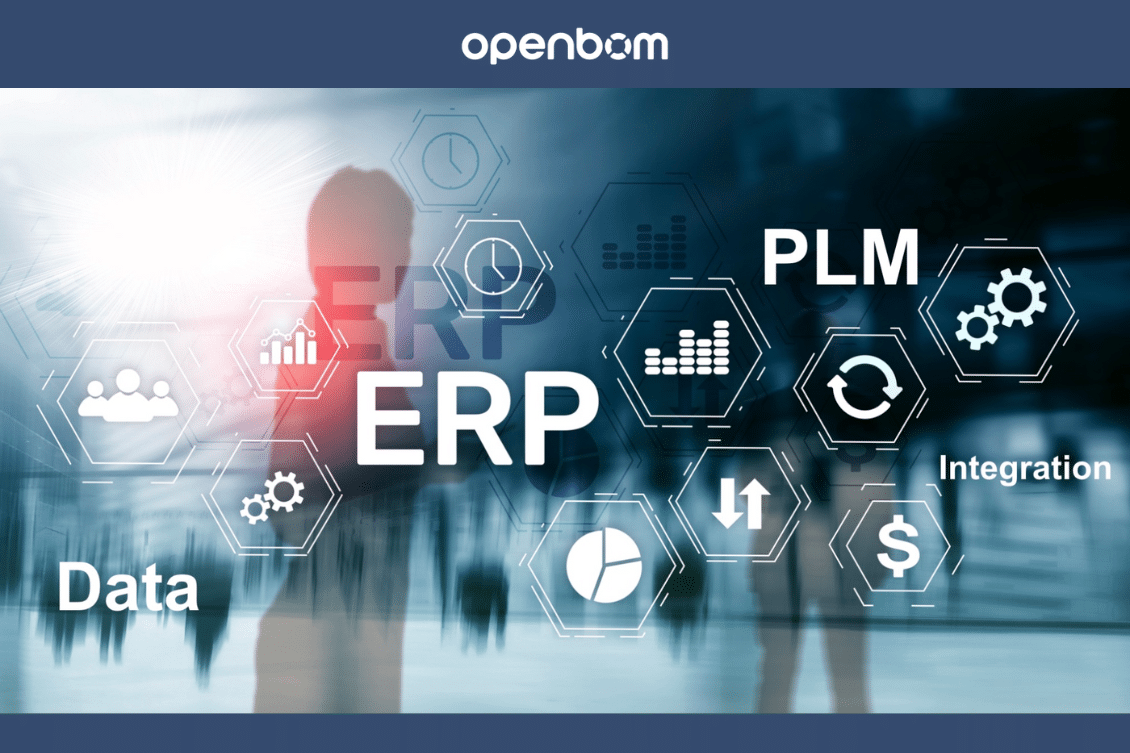
Product Lifecycle Management (PLM) is a comprehensive business approach to managing the entire lifecycle of a product, from the initial concept and design stages to manufacturing, maintenance, and eventual retirement or disposal. PLM involves the technologies and tools to manage data, connecting people, processes, and business systems to optimize product development and improve the efficiency and effectiveness of the overall product lifecycle.
PLM is a journey and one of the important milestones in your PLM journey you will get a question about integrating with the ERP system. In every large manufacturer, ERP focuses on inventory, operation, and financial transactions. ERP systems provide a centralized database that can help businesses streamline operations, improve decision-making, and reduce costs.
Why Do You Need To Integrate PLM and ERP software?
PLM implementation requires ERP integration because the two systems are complementary and can provide numerous benefits when used together. Here are some of the reasons why PLM and ERP integration is essential:
- Seamless Data Exchange: PLM and ERP systems use different data models and data structures, which can make it difficult to transfer data between the two systems. Integrating the two systems ensures seamless data exchange and provides a single source of truth for all product-related data.
- Efficient Workflow: Integrating PLM and ERP systems streamlines workflow and eliminates the need for manual data entry, reducing errors and improving efficiency. With a unified system, data can be easily accessed by all stakeholders, reducing the time required to make decisions.
- Cost Savings: PLM and ERP integration can help reduce costs by improving inventory management, reducing product development time, and minimizing the risk of errors and rework. This, in turn, can help increase profitability and reduce costs.
- Improved Collaboration: Integrating PLM and ERP systems enables better collaboration among teams, including designers, engineers, and manufacturers. By sharing data in real-time, teams can work more efficiently, reduce errors, and improve product quality.
- Better Decision-Making: PLM and ERP integration can provide insights into product performance and customer feedback, enabling businesses to make data-driven decisions that can improve product design, supply chain management, enterprise resource planning, production, and distribution.
Although PLM-ERP processes are essential for every organization, it is very important not to overkill them, use technologies for the job, and follow industry best practices to make it successful.
Technologies for PLM-ERP Integrations
PLM-ERP integration tech has been around for the last 20+ years. There are several technologies that can be used to integrate PLM and ERP systems. But it is really important to follow modern technological trends to avoid building a PLM integration monster. The choice of technology depends on the specific needs of the organization, the complexity of the systems being integrated, and the level of integration required. As such old enterprise resource planning (ERP) software can provide limited tools to integrate. At the same time modern cloud PLM and cloud ERP systems can provide technologies to make integration easier.
Here are some of the commonly used technologies for PLM and ERP integration:
- Export/Import aka Extract, Transform, Load (ETL) Tools: Simplicity always wins. Therefore remember to use simple tools first. ETL tools are used to extract data from one system, transform it into a format suitable for another system, and load it into the target system. ETL tools can be used to integrate PLM and ERP systems by extracting data from one system, transforming it into a format suitable for the other system, and loading it into the target system. It is always good to start from a simple ETL scenario to learn the real business processes’ needs and clarify requirements.
- Application Programming Interfaces (APIs): APIs are a set of protocols and tools for building software applications. APIs can be used to integrate PLM and ERP systems by enabling communication between the two systems at a programmatic level. What is extremely important is to choose the right APIs for the job.
- Web Services and REST API: Web services are software systems designed to support interoperable machine-to-machine interaction over a network. Focus on REST API to build your integrations. REST API can be used to integrate PLM and ERP systems by providing a standardized interface for communication between the two systems. Remember, in the 21st century not to use old APIs and technologies.
- Middleware: Middleware is a software layer that connects different applications and enables communication between them. Middleware can be used to integrate PLM and ERP systems by providing a bridge between the two systems. The great thing about middleware and especially iPaaS (integration platform as a service) is its compatibility with modern web standards and technologies.
- Pre-packaged Integrations: There is no such thing as an out-of-the-box integration. At the same time, check what prepackaged integration is provided. Such integration can deliver a starting blueprint that you can use to modify and adapt to your needs.
OpenBOM PLM-ERP Integrations available
At OpenBOM we focus on how to provide a wide range of scalable technological solutions to support PLM-ERP integrated flow. As such, here is what you can get from OpenBOM:
- OpenBOM’s out-of-the-box Export/Import function can be used for manual data transfer. These tools are easy to use and can be used without special preparation immediately. Also, they can serve as a validation point before more complex solutions will be delivered.
- OpenBOM REST API can be used to integrate with different technologies to build integrations with different complexity levels. It can be developed quickly and adapted to specific customer needs. It includes event subscriptions to trigger operations. Also, REST API can be used with tools such as IFFTT and Zapier for automated processes.
- OpenBOM no-code/low-code programmable user-defined commands. Those customizable tools can be configured for each OpenBOM account and point to a specific external REST API endpoint (for example to save data in ERP). The payload provided to each command can include a full BOM or a specific revision.
- Partners and middleware based solutions. OpenBOM vdR Nexus is an integration platform as a service to provide middleware and also a set of prepackaged integrations between PLM and various ERP systems. Also, integrations are available from other partners.
- OpenBOM pre-packaged integrations: Check ready-to-be-used solutions integrating OpenBOM with different ERP software and financial systems.
Conclusion:
PLM and ERP integration can be achieved through various technologies. It is very important to choose the right tool for a job. Choosing the most simple solution can help your organization to optimize an entire set of processes connecting your business management software such as PLM, ERP, and others. It will help to optimize product lifecycle management, enterprise resource planning, supply chain systems, and financial accounting systems. Organizations should carefully evaluate their specific requirements and choose the most suitable technology for their PLM and ERP integration projects. OpenBOM provides a wide range of tools and technologies to support PLM-ERP integrations.
REGISTER FOR FREE and start a 14-day trial to check how OpenBOM can help you today.
Best, Oleg
Join our newsletter to receive a weekly portion of news, articles, and tips about OpenBOM and our community.


